Kinshi tamago is made from usuyaki tamago (eggs that have been cooked into thin sheets) that is then cut julienne. Usuyaki tamago is used in various ways such as using it as a wrap for sushi or kinshi tamago which is used as an ingredient in popular Japanese dishes such as chirashizushi or hiyashi chuka. The key to beautiful usuyaki tamago and therefore beautiful kinshi tamago is to not allow any browning to happen on the surface of the eggs. This can be difficult on the first one which I equate to cooking pancakes. Every pancake after the first one is perfect. I’ve found that one way to keep from wasting the first one is to have a wet towel folded to about the same size as the bottom of the pan and once the pan heats up the first time, press the bottom of the pan on top of the towel to bring the temperature down and you’re good to go.
There are variations of how to make usuyaki tamago but I like to keep it simple since if you’re making it, there are probably a lot of other things you have going on for your meal. Some recipes call for dashijiru or dashi powder but I like to add just a little bit of salt and sugar. For chirashizushi, I like it a little more on the sweeter side but for hiyashi chuka, I don’t add as much sugar. This recipe is for when I prepared it for hiyashi chuka. You can also add corn starch or katakuriko (potato starch) but I find that it’s not necessary unless you need it to be sturdy to wrap something in it or you like it to have a chewier texture.
Ingredients
2 eggs
1/8 tsp. kosher salt
1/2 tsp. sugar
Canola oil or vegetable oil for frying
Directions
1) Mix the eggs in a bowl and add the salt and sugar. Don’t beat them until they are frothy, just mix them lightly.
2) Pass the mixture through a sieve. The finer the sieve, the more even the egg will be. If you use a coarser sieve you may end up with small white spots on the surface of the egg (see photo below) but for kinshi tamago it’s hard to tell.
3) Heat the tamagoyaki pan on keep it on low.
4) Have a wet dish towel or small rag ready to put the hot pan on just before adding the egg in. When the pan it hot, place the bottom of the pan to the surface of the cold towel for about 2 seconds to release some of the heat. It may even steam.
5) Use small piece of gauze to soak up some of the vegetable oil in a separate bowl and coat the surface of the pan. Using gauze will help you get an even coating of oil. Do this in between each batch.
6) Mix up your egg mixture prior to adding it to the pan and add a thin later across the surface of the pan. The amount depends on how large your pan is but you want a thin layer across the surface of the pan.
*Tip: It’s better to add too little than too much because you can add a little more in but it’s harder to pour the egg out and there’s the issue of pouring hot egg back into the egg mixture…oh and it’s helpful to use a container with a spout for easy pouring.
7) If your tamago yaki pan is large, you may have to move the pan around for even cooking. It cooks very fast so don’t step away from the stove. Once the egg starts to firm up and it bubbles a little, it’s done.
8) Use the a chopstick or spatula to pull the edges away from the pan and place it on a makisu (woven bamboo mat to roll sushi) to cool. Two eggs makes about 4 usuyaki tamago because I have a small tamago yaki pan.
Things You’ll Need
1) Tamagoyaki Pan.
2) Gauze
** A note about the pan: I made usuyaki tamago for years with a round non-stick frying pan. It tastes the same but if you want even size strips of kinshi tamago, you’ll have to cut off the edges so you might want to use more egg. After all, the edges will get eaten. Someone will walk by and eat the scraps. Trust me.
Pass the eggs through a sieve.
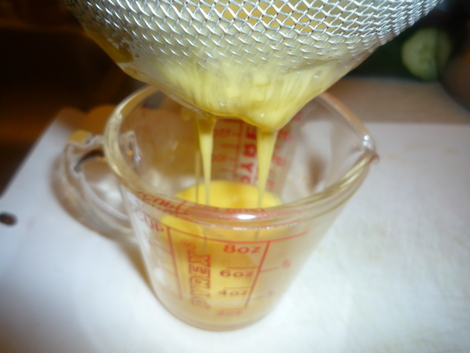
If you don’t mind white dots on the surface of your kinshitamago, use the chopsticks to help the whites of the egg pass through the sieve.

Grease the pan with the gauze soaked in vegetable oil.
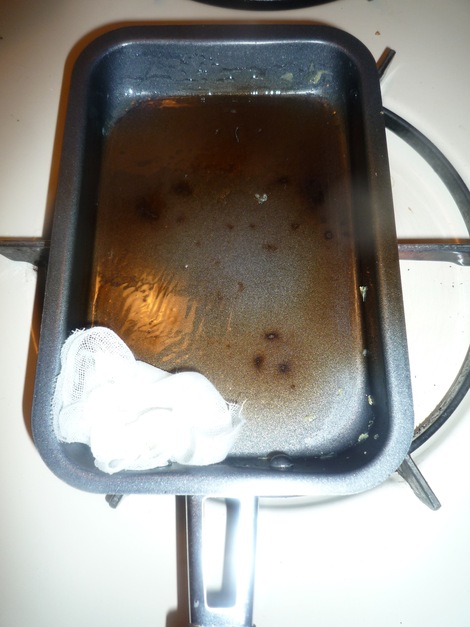
Usuyaki tamago that was passed through a fine mesh sieve is a smooth yellow.
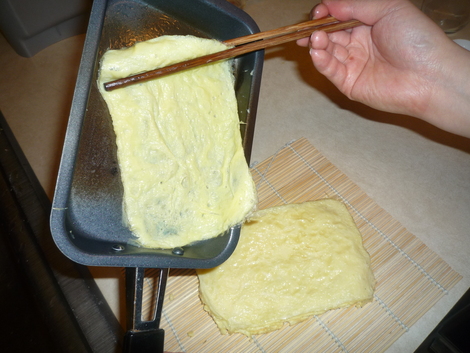
Usuyaki tamago passed through a coarse sieve ends up egg whites that are visible.
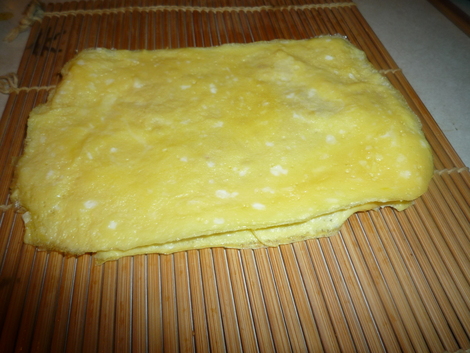
Cut the usuyaki tamago into thin strips and you have kinshi tamago.
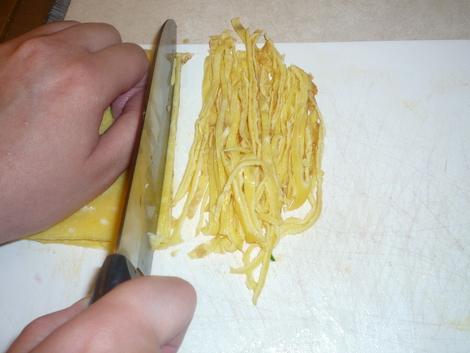
umamitopia.com: Authentic Japanese, CA fusion, French & Italian influenced recepies.

Naomi Kuwabara was born and raised in California but spent many summers in Japan growing up. She has spent time living in Hokkaido and Osaka, both meccas for Japanese cuisine. Her passion is cooking and sharing her experiences cooking Japanese food with others. Her blog Umamitopia is about her experiences cooking Japanese food. Her greatest inspirations are from her mother and grandmother. Her cooking adventures can be found at http://umamitopia.com.








